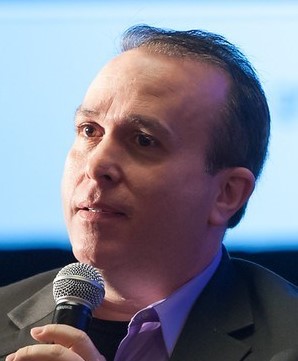

The interest and growth of academic esports has grown exponentially over the past two years. With the COVID-19 pandemic cancelling so many traditional athletic programs globally this year, a vast number of schools and universities are launching programs 1-2 years sooner than initially anticipated. In many such instances, students are practicing and playing from home, as access to school and campus facilities may be limited.
This is where the problem festers. For all its positive qualities, the field of esports still grapples with its inherent issue of toxicity.
A 2019 survey from the Anti-Defamation League found that 65% of players reported experiencing “severe harassment” including physical threats, sustained harassing and stalking. Exposure to such behavior, the study shows, found that 23% of players became less social and “one in 10 players said they had suicidal thoughts after being harassed while playing online games.”
A recent survey among League of Legends players highlights both the scope and severity of such behavior. During game play, 98% of all players reported being cursed at during game play, and 79% of players reported being harassed after the game was over.
A 2019 Variety article highlights “esports’ struggle with inclusion is a longstanding problem.” A cursory review of the roster for most K-12 or university programs is likely to find only 0-5% female players, despite the fact that females accounted for 46% of gamers nationwide.
The prior League of Legends survey found that 32% of female players reported experiencing sexual remarks or propositions after game play (compared to 3% among male players), and another 5% reported being stalked outside of the game.
“Even if it has policies in place that prohibit bullying and harassment, your school is responsible for investigating, ending, and preventing harassment.”
National Women’s Law Center
Between bullying and harassment and little administrative efforts to effectively curb these bad practices, are academic institutions exposing themselves to Title IX investigations? As the National Women’s Law Center highlights in an FAQ, “Title IX is not just about sports! It is a federal law that prohibits discrimination on the basis of sex—including harassment and bullying—in schools that receive federal funding.”
The Women’s Law Center document further defines sexual harassment and gender harassment, and stresses “An anti-bullying policy does not mean the school’s work is done. Even if it has policies in place that prohibit bullying and harassment, your school is responsible for investigating, ending, and preventing harassment.”
Should a single student feel their rights are violated, institutions face a multi-year investigation. A recent article finds that the typical Title IX investigation from the OCR could go unresolved for up to 5 years with an estimated cost of $91,000.
In addition to Title IX, institutions may be vulnerable to litigation if such matters are not proactively addressed. School officials can’t claim ignorance of these issues, when concerns about harassment, sexism, cyberbullying and racism are featured in stories in the New York Post, the Washington Post, and the New York Times.
Esports organizations are making efforts to address these issues. NASEF’s Code of Conduct is a great example of the expectations we must set for players and coaches. NAECAD also offers resources and training for K-12 and higher education coaches, directors, and administrators. But just as secondary and tertiary schools currently have established policies and procedures, they must also use technology to monitor, deter and address such issues when they arise.
Academic esports can and should be part of K-12 and higher education institution’s offerings. Today, esports may be viewed as a simple extracurricular activity rather than an established program. But whether your institution offers varsity esports or just an esports club, there are steps your institution can take right now to avoid Title IX investigations and negative press stemming from such complaints?
- Engage your institution’s Title IX Coordinator
Every academic institution has a staff member designated as a “Title IX Coordinator.” That individual should be consulted to determine local best practices to ensure your esports program, and ways to proactively address any concerns that arise. If you wait until a problem erupts, then it’s too late. - Know Your State’s Specific Bullying Laws
Every U.S. state offers some degree of legislation regarding bullying and cyber-bullying. The US Department of Education offers a 2011 Guide at https://www2.ed.gov/rschstat/eval/bullying/state-bullying-laws/state-bullying-laws.pdf. In addition, the U.S. Department of Health and Human Services maintains a current state-by-state summary at https://www.stopbullying.gov/resources/laws. - Adopt a Code of Conduct – Enforce It
Make certain your esports staff adopt and enforce a code of conduct that addresses cyberbullying and harassment. NASEF offers a code of conduct, as well as other organizations such as Evolve Youth Esports. - Implement Technology to Combat Bullying
Most bullying occurs over voice on alternate channels like Discord, making it impossible for game publishers to capture or track such behavior. It’s also very difficult for a coach or director to monitor the voice conversations of multiple players at once. New technology solutions, such as Healthy Player One, act like video cameras on school buses. They capture all video and audio, helping to deter such behavior, and creating a detailed proof of record to show exactly what happened before and during an incident, should a student wish to alert officials of harassment. For a small annual license, the technology helps proactively address bullying and help avoid costly litigation.
Cyberbullying is a serious issue, but it shouldn’t be allowed to interfere with a program that can provide academic and social benefit to young people. Your administration can take a few proactive steps today to ensure esports continues to grow, and one in which all students can enjoy an exciting and safe experience.
Dr. Jay Prescott is Vice President for Student Affairs at Grand View University in Iowa. Grand View University was one of the first colleges nationwide offering a varsity esports program and hosts annual conferences for esports coaches and directors. He’s also the co-founder and executive director for NAECAD (the National Association of Esports Coaches and Directors). Visit naecad.org to learn more.
Elliott Levine is Co-Founder and Chief Product Officer of Healthy Player ONE, and Chief Academic Officer for STS Education, a national educational technology services firm. Formerly the first Distinguished Technologist in Education in Silicon Valley, Elliott is a past school district official, adjunct professor, columnist, and sought-after keynote speaker in the edtech vertical. He advises institutions and companies privately, and his opinions expressed in this piece are entirely his own.





